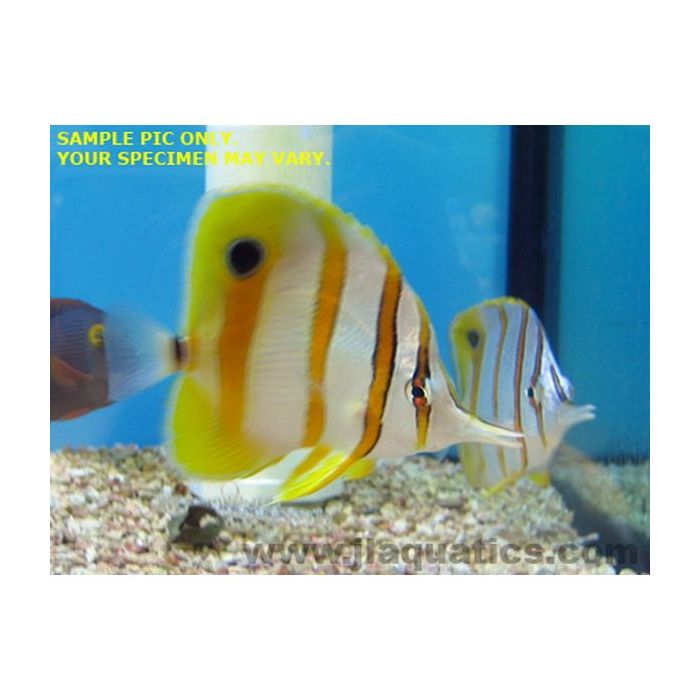Copperband Butterfly (Australia)
Distinctive orange stripes across a milky white background combined with a long snout mark the unmistakable Copperband butterfly. A single dark eyespot on its dorsal fin adds extra appeal. It grows up to 8 Inches and needs an aquarium of at least 125 gallons.
Copperband butterflies collected from Australia are highly sought after because they readily accept normal aquarium foods, such as frozen shrimp. We have even had success feeding Vitalis brand pellets! Their survival rate is extremely high, unlike those from other locations which may stop eating, or never begin in the first place.
This species is normally quite peaceful and shy, and should not be kept with aggressive tank mates. It can be quite aggressive towards its own species; If several are to be kept together they must be added at the same time to a large aquarium. Butterflyfish do not show differences between males and females. They are related to angelfish, but lack the angel's distinctive cheek spines.
A butterflyfish's favorite food is an anemone, so they should not be kept in the same aquarium with one unless it is guarded by aggressive clownfish. The butterflyfish knows to attack the anemone on its mouth, which does not sting, and will make a quick meal of it. Because of this behavior this species is often employed to rid an aquarium of pest anemones such as Aiptasia.
This species does not typically nip on corals; however it may bother LPS, soft corals and zoanthids, clam mantles, sponges, and feather dusters. They do not usually bother other types of invertebrates such as crustaceans. They feel most secure when there is plenty of live rock to hide in, as well as open space for swimming. A wide variety of meaty and herbivore preparations can be offered, such as frozen Mysis shrimp, half shell clams, marine algae and Spirulina; it should be fed 2-3 times a day. Soft food may also be pressed into the rock to provide grazing opportunities. Supplements such as Brightwell's Angelixer and Garlic Power will increase the nutrition of any food offered.
Customers who bought this also purchased
 Chalice - Miami HurricaneOut of stock
Chalice - Miami HurricaneOut of stock
















